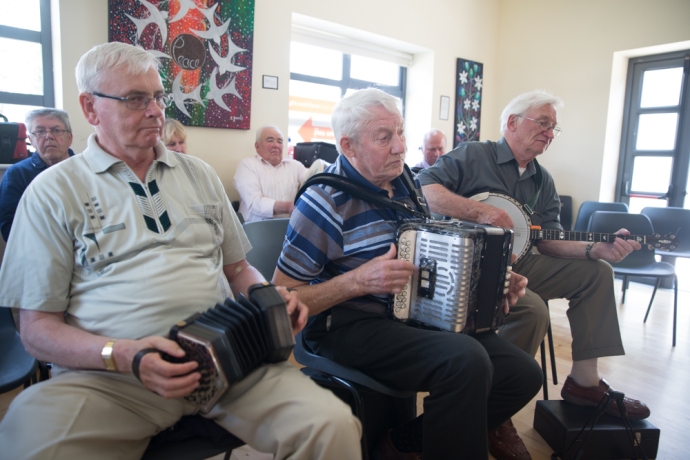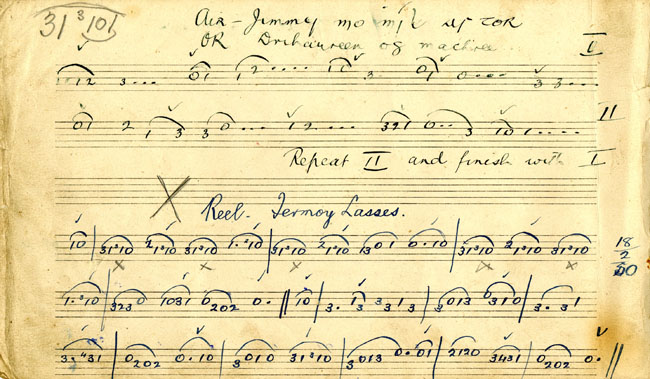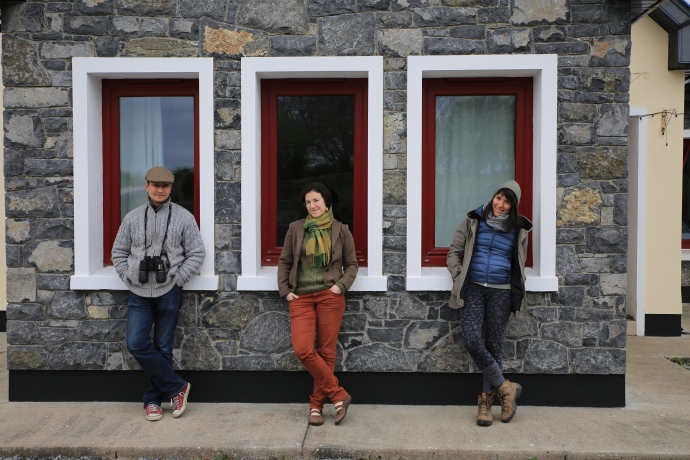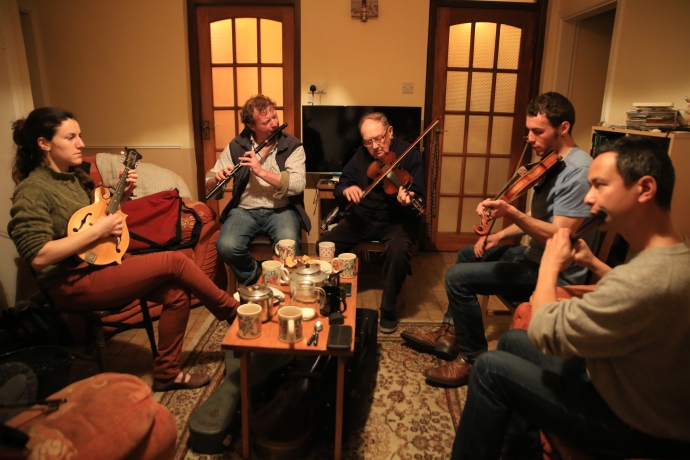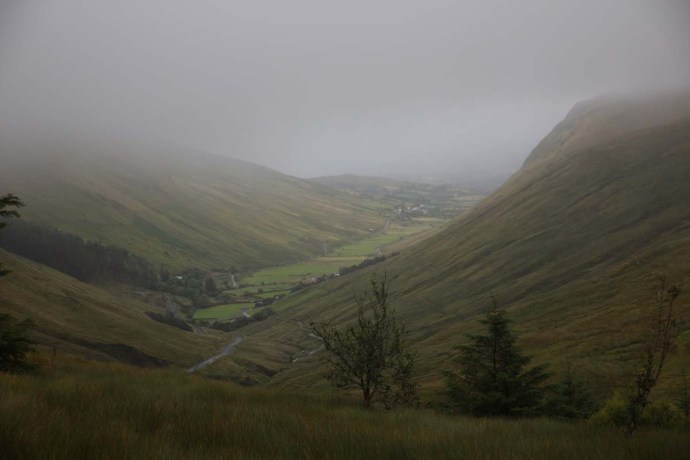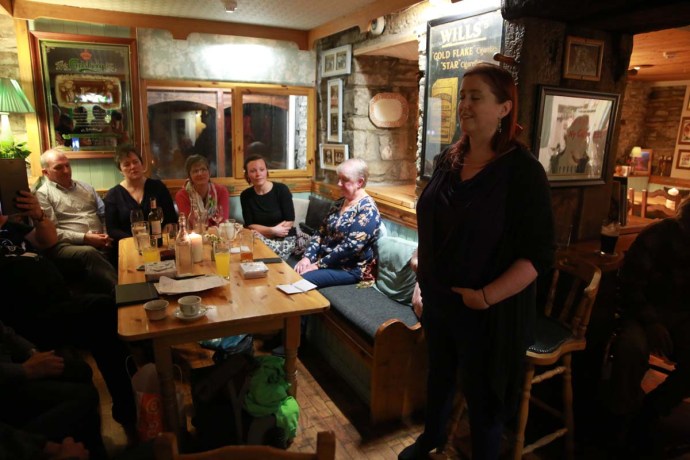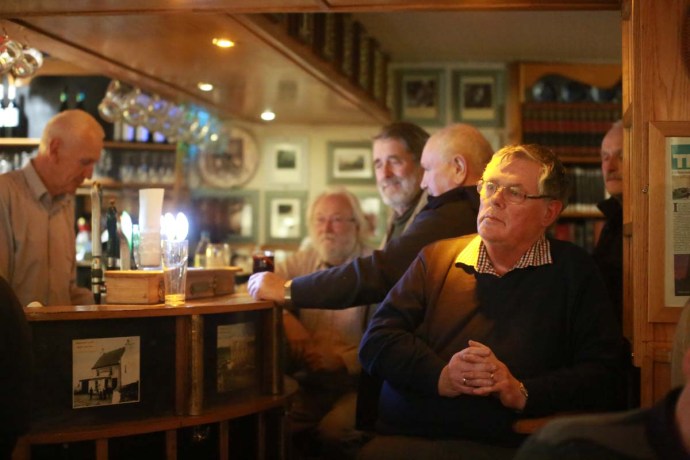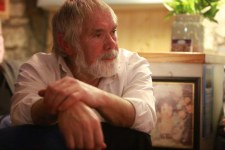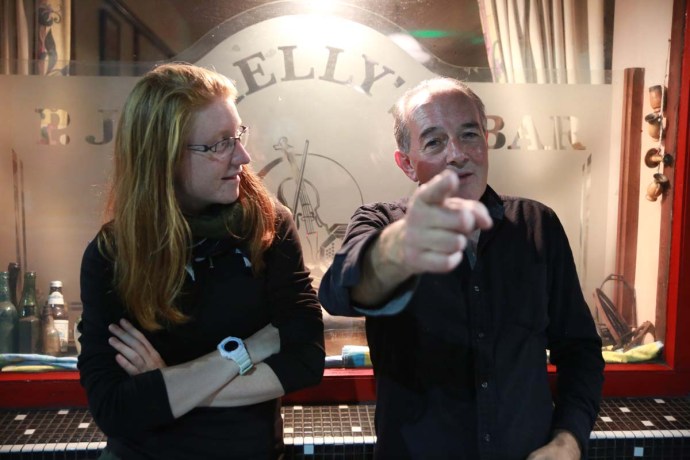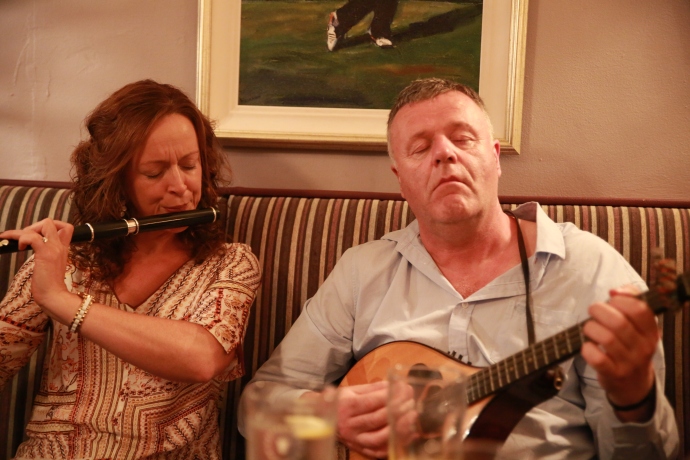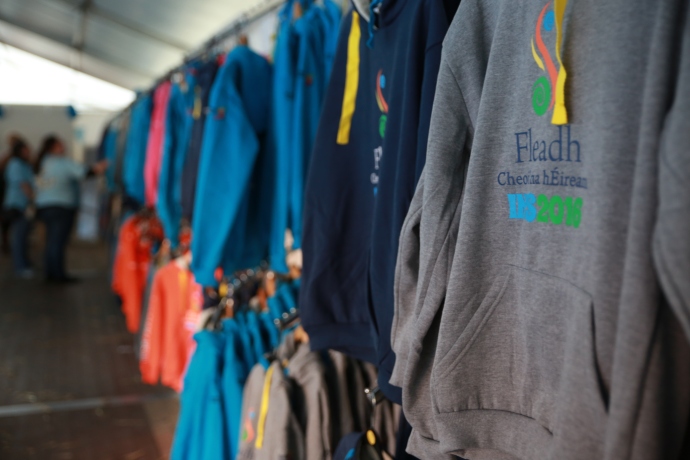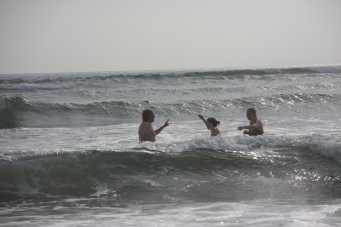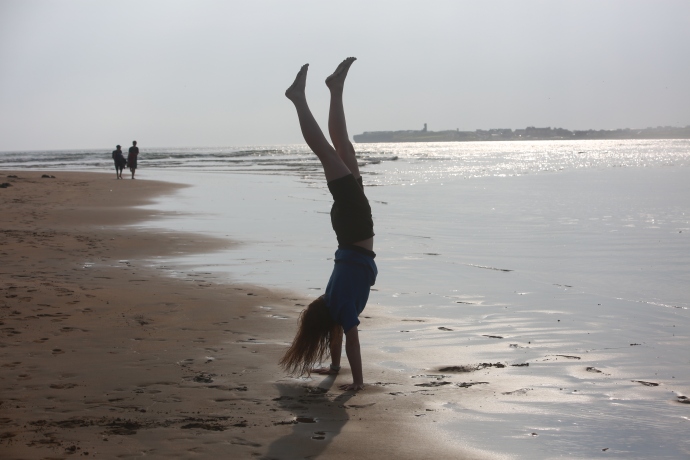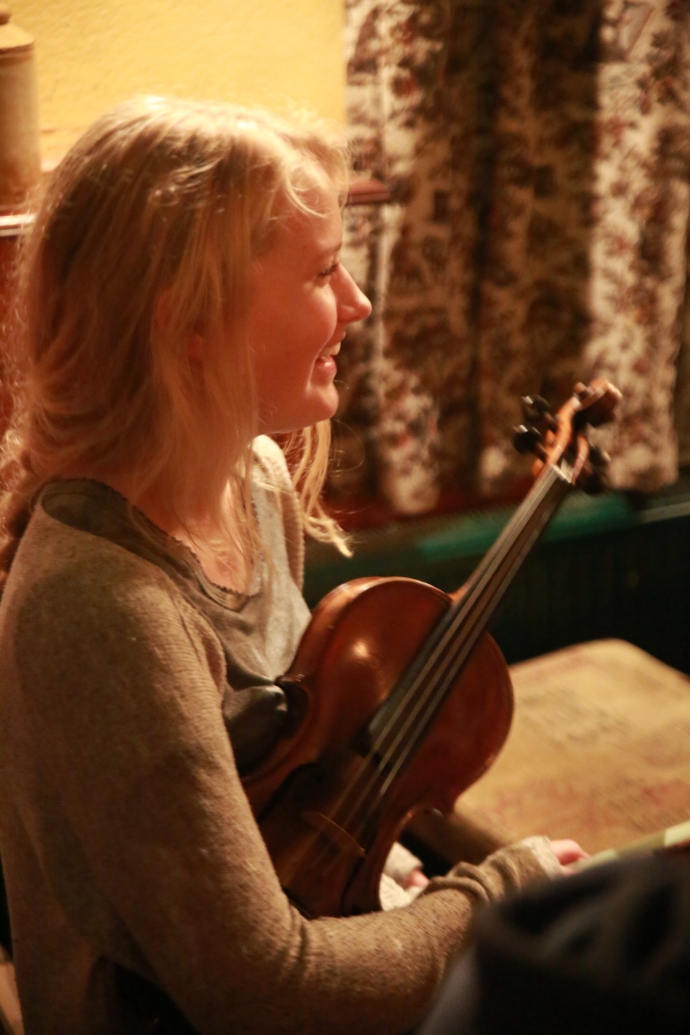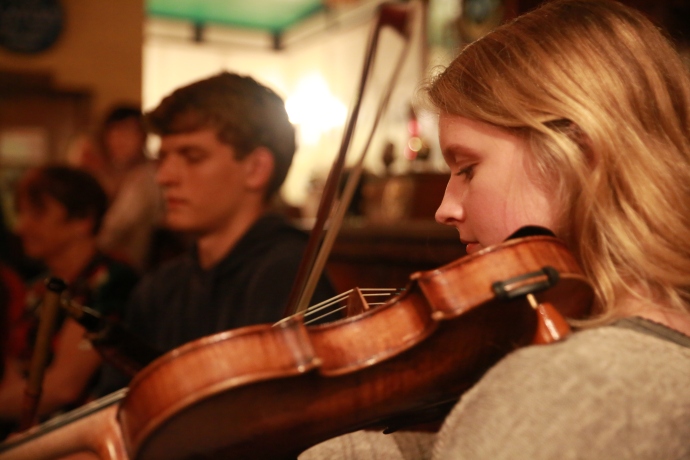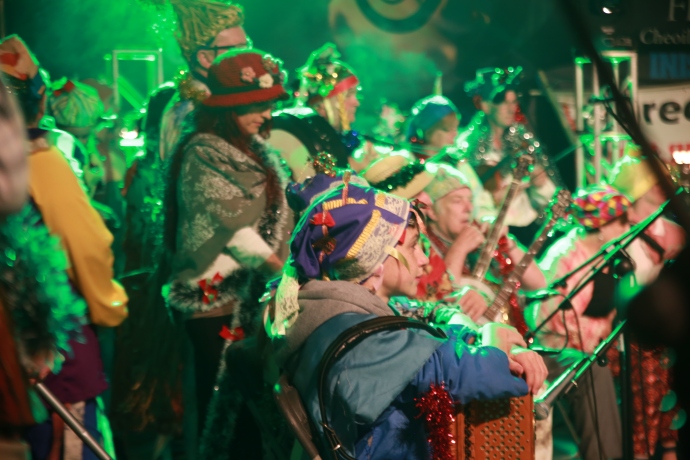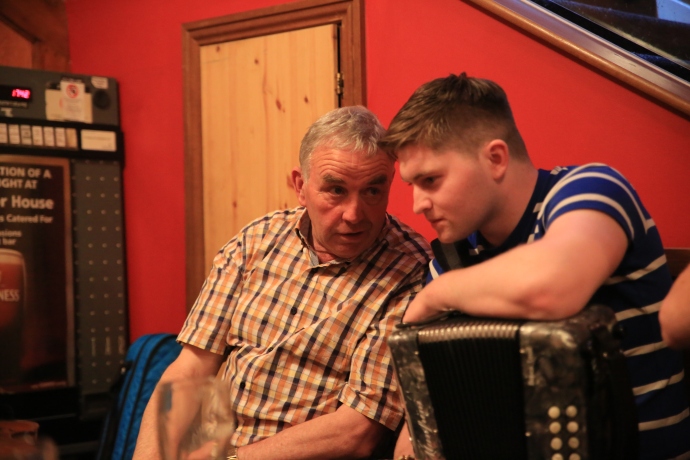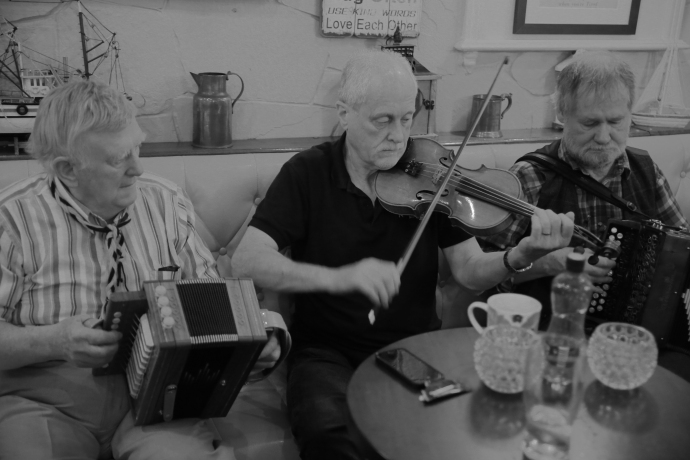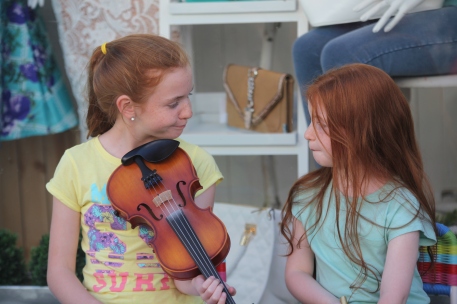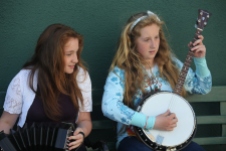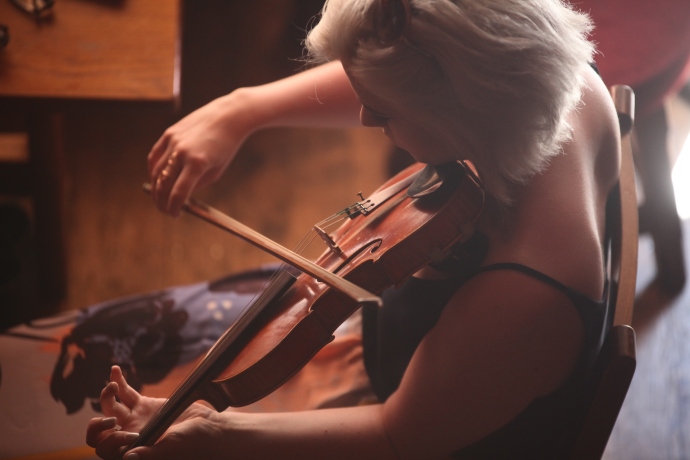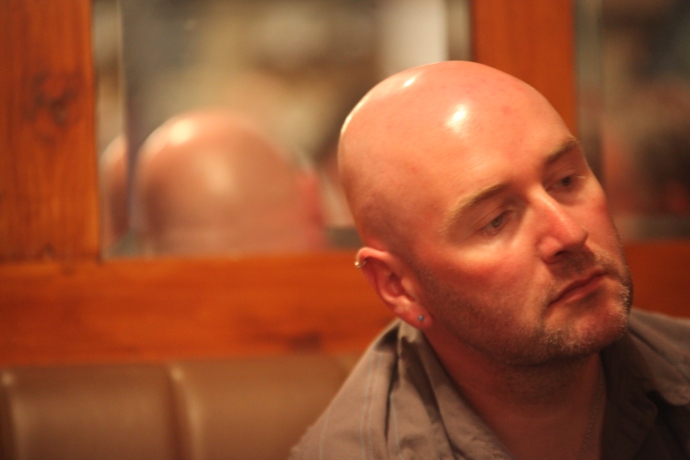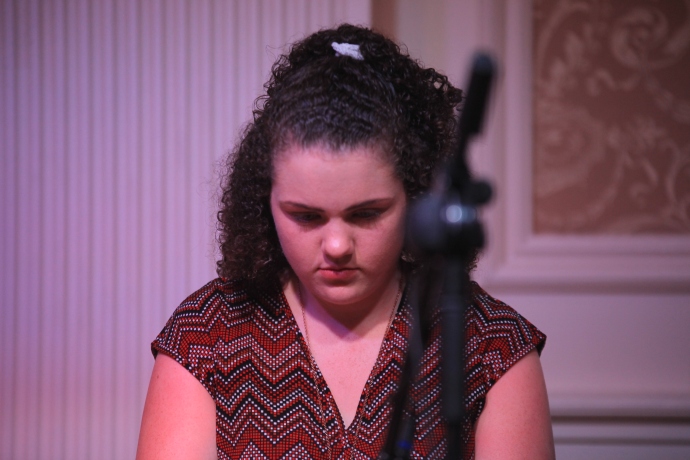It’s Day 3 of my final roadtrip, in southeast Ireland. Check out my earlier blogs as to how I got to Boris Carlow; that just rolls off the tongue so beautifully I just have to keep repeating it. Boris Carlow. By rights I should go home. The forecast is not good, but I want to visit a nearby dolmen and the castle at Carlow and I’ve decided after that to head on to Avoca in Wicklow to see the old copper mines. The sun was trying to break through so I hit the road at 9am.
It was only 30km to the Brownshill Dolmen, which lies only 4km east of Carlow town There are over 1,000 dolmens in Ireland but this one is right up there with the best. It is located in the middle of a large field (by Irish standards) and you know you are dealing with something unusual when you can see it 400m away poking up over a 2m high crop of ‘field beans’ (a fodder crop I had never seen before).

Brownshill Dolmen, visible over a crop of field beans.
What makes this one unusual is the size of the granite capstone; it is approximately 5 x 6 x 2 m. Estimates of its weight vary, so let’s sort this out once and for all. Volume, based on the above estimate, is 60 cubic metres. Using a specific gravity of 2.7 (average for granite) and the formula
Tonnage = Volume x SG
we get a tonnage of 162 tonnes. So that’s my guess, which happens to be greater than the estimates I have read, which range between 100 and 150 tonnes.

Front view of Brownshill Dolmen, showing its massive size compared with the two portal stones and the gatestone.
That is monstrous and certainly the largest in Ireland. It is a portal tomb dating from 3,000BC. The front sits on two vertical standing stones (portal stones) and between them is a gatestone. It slopes back to almost ground level where the rear of the capstone is supdported by a prostrate backstone.

Rear view of Brownshill Dolmen showing prostrate backstone.
Of course, the most asked question is “how did they get it up there?”. Well here is my theory. Most people assume that it was brought here from somewhere else. Well it was, but by ice. I think it is a glacial erratic and was dumped here after the glaciers melted about 12,000 years ago. Somehow, and I have no idea how, the front of the stone was lifted and supported with earth and stones until it reached the height of the portal stones (probably also glacial erratics) which were placed under the capstone to support it. The same would then hav been done with the backstone What we can be sure of is that it was built with sheer druidpower.
Now, time to Follow Me Up to Carlow. I had to get that in. For those not familiar with the phrase it is the refrain from a 19th century song that describes The Battle of Glenmalure in Wicklow, fought on 25 August 1580, when a Catholic force demolished the British during the Desmond Rebellions. Just love the lyrics including this line….
Rooster of a fighting stock
Would you let a Saxon cock
Crow out upon an Irish rock
Fly up and teach him manners.
Carlow lies on the Barrow River, the same river that flows through New Ross and that is guarded by the Hook Head Lighthouse. (Check out my blog on Day 1). My goal here was Carlow Castle, another of those built by the Norman strongman, William Marshall. It was built around 1210, to guard the vital river crossing.

View of Carlow Castle from the west.
The original structure was pretty unique for Irish castles. It was rectangular and had towers on each corner and appears to have been modelled on a Norman castle in France. It survived pretty much intact until 1814 when a Dr Middleton accidentally blew it up in trying to convert it to a lunatic asylum (was a lunatic in charge of the asylum?). All but the western wall and its two corner towers was destroyed. You do get a bit of a sense of the grandeur of the original building, though from what is left today.

Two of the four corner towers of Carlow Castle that have survived

View of the castle from the south showing the extensive damage caused to the building in 1814
I took a little walk along the river. Graiguecullen Bridge crosses the Barrow, and dates to 1569 though it was significantly altered and widened since then.

Graiguecullen Bridge dating from 1569 crosses the Barrow. In the distance is the lime kiln tower of the old sugar factory.
In 1703 the decision was made to make the Barrow navigable. This involved developing the non tidal stretch of the river from St. Mullins to Athy, (Co. Kildare), a stretch of 68 kilometres and requiring 23 locks. The locks are all functioning today and many have the original stonework. I visited the lock at Craiguecullen and found an original milestone with the distances to Athy (12 Miles) and St Mullins. After Athy, it links up with the Barrow Line of the Grand Canal for another 45 kilometres, with 9 locks, to the mainline of the Grand Canal. That meant you could travel from New Ross in Waterford to Dublin by boat. The Barrow ceased to operate commercially in 1959 and is now used for recreation only.

Lock on Barrow River at Graiguecullen.

Original (?) milestone with distance to Athy.
Looking north from the river the skyline of Carlow is dominated by an unusual looking tall steel tower which looks like nothing I have seen. So I decided to find out what it was. It was easy enough to locate, but it but it sits on a wasteland with a high fence around it so I was none the wiser about what it actually was.

Carlow limekiln tower
Turns out it is a limekiln and was part of the infrastructure of a sugar factory. Yes, really, sugar. Ireland once had a vibrant sugar industry base on sugar beet, and Carlow was the centre of it. A factory was set up here in 1926 and other factories followed in the 1930s in Mallow, Thurles and Tuam. By 1936 there were 28,000 farmers growing sugar beet across 22 counties. At its peak during the early 1980s Ireland produced 220,000 tonnes of sugar a year. When EU subsidies were withdrawn in 2005 the Carlow plant closed and the only other remaining factory in Mallow also closed the following year, bringing an end to an industry that still supported 4, 000 growers.
The tower is twelve levels tall. Access was by steps around the outside with walkways at each irregularly spaced level. I have no idea how it works. Anyone out there know? All trace of the factory other than the tower is gone. In 2016 it too nearly disappeared when it was taken off the protected list. It was saved at the last minute; but the battle between those who consider it part of the area’s heritage and those who consider it an eyesore continues. A real shame if it is demolished. It would make a totally unique and challenging lookout tower.
Back on the road now to my next destination, a 60km drive to Avoca in Co Wicklow. A quick stop first, about 20 km from Carlow, for another dolmen. Haroldstown Dolmen is a beautiful example of a portal tomb and sits in the middle of a field, visible from the road adn easily accessible for a closer look.

Haroldstown Portal Tomb

Haroldstown Portal Tomb. Side elevation.
My reason for going to Avoca was to check out its mining heritage. As I have learnt more over the last five years I have been really surprised how rich Ireland is in historic mining sites and I have visited and blogged on a number of these including Arigna in Leitrim, Allihies and Mizen in Cork, the Copper Coast of Waterford, Silvermines in Tipperary and Muckross in Killarney. Really more should be made of in terms of its heritage value.
But as usual I got distracted. Most tourists visit Avoca to see the Meeting of the Waters, the fabled location where the Irish bard, Thomas Moore, wrote perhaps his most famous song. So that was my first stop. The name comes from the site being the confluence of the Avonmore and Avonbeg Rivers to form the Avoca River
There is not in this wide world a valley so sweet
As the vale in whose bosom the bright waters meet,
Oh! the last rays of feeling and life must depart
Ere the bloom of that valley shall fade from my heart.

The Meeting of the Waters. The Avonmore and Avonbeg Rivers meet to from the Avoca River, heading off into the distance.
It is a pretty spot there is no doubt. A small park marks the spot, with plenty of reminders of Thomas Moore’s historic presence. There are monuments and the remains of a tree under which he is said to have written his words.

Bridge over the Avonbeg River at the Meetng of the Waters
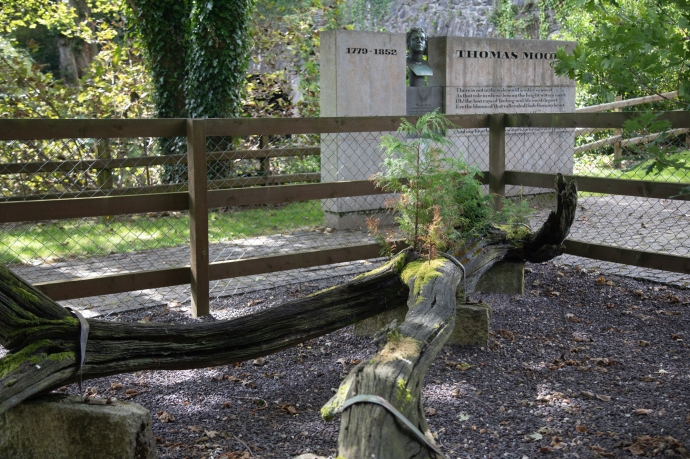
Monument to Thomas Moore and remains of a tree that he is said to have sat under to pen his words.
But for me the most moving ‘monument’ was another tree, this one alive, leaning out over the water. Evoking the female form, it seemed to capture the spirit of the place. I call the photo Undressed Timber. Nature imitating Life imitating Art.

A tree at the Meeting of the Waters. Undressed Timber.
I headed down the Avoca River valley to look for other treasures, lead, silver and copper, perhaps far from Thomas Moore’s mind. Just a few hundred metres on and I could see a beautifully preserved Cornish Engine House, on the ridge above the valley. I pulled up next to the Farriers Hotel, another indicator of times gone by.

Farrier’s Inn near Avoca

Cornish Engine House viewed from the Avon River
The Engine houses are a telltale sign that there was an underground mine nearby. These marvellous buildings are a feature of mining areas throughout Ireland where they housed the steam driven engines that drove the beam pumps used to dewater the mines and to crush the ore. I find the stone and brick buildings as architecturally impressive as the ecclesiastical ruins that get far more attention in the conventional built landscape.
I tried to get closer to the building but I was defeated by a high cyclone fence and the rugged terrain. The only other remnant of mining at the site are two bins which stored ore before loading into trucks to take to the processing plant.

Restored ore bins used to stockpile ore brought up from underground
Mining is believed to have started for copper here, in the Bronze Age (commencing 2,500 BC). It is believed that it was still a mining centre in 50AD when the location appeared on a Greek map by Ptolomy. From the 12th to 17th century iron was produced. From 1750 it was mined for lead and modern copper mining started in 1812.
Continuing my search I could see plenty of mine dumps and another Engine House from the top of the next ridge, but again I was thwarted in trying to get closer. I am sure there is a road up there but I’ll have to come back when I have more time.

Distant mine workings. Another engine house appears among the mine dumps
Before leaving the mining area I went to visit the nearby Mottee Stone. it is a giant granite boulder sitting on the top of a hill with 360 degree view over the five counties surrounding Wicklow.

Mottee Rock and the view over Wicklow
The huge rock is another glacial erratic (like the capstone at Brownshill) deposited by a melting glacier. We don’t know how far the stone was carried but the underlying geology here is slate. The nearest similar granite is 13 km away at Glenmalure. Iron rungs have been set into the stone to act as a ladder, which allows you to climb the 2.4 metres to the top. The story goes that the local landowner wanted to impress his intended wife with the size of his estate, so he got some miners from Avoca to put them there so she could get a better view of the size of his holding.

Cronnebane Mine viewed from Mottee Rock
The most obvious feature in the view though is the large open cut and spoils heaps of the Cronnebane Mine. This is a later phase of mining completed between 1970 and 1982 when 8 million tonees of 0.6%Cu ore was extracted.
Heading towards Avoca village I passed the Old Castlemacadam Church overlooking the Avoca Vale near the village. It looked different so I stopped. Built in 1819 for the Church of Ireland it was abandoned after only a short life in 1870. It is a solid structure with a belfry tower in good condition though unroofed and is surrounded by a graveyard full of interest.

Old Castlemacadam Church
I found the external walls of the church interesting too. They hold evidence of changing aesthetics and a number of different finishes. The bare stone initially was covered with a render. Sometime later it was covered with a layer of slate shingles cemented onto the render. Then another layer of render was placed over the top of the slates, leaving them in place. This was scored with diagonal lines and there appeared to be another thin layer of render over the top of this. It reminded me of a house I once bought in Leichhardt in Sydney. I decided to renovate and lifted the carpet in the living room. Underneath were two more layers of carpet and then a layer of lino over the now rotten floorboards.
As I said the church itself was built in 1819 but the graveyard has many 18th century headstones, the oldest is 1711. So presumably there was an older church on the site. No idea whether it also was Church of Ireland. There are a lot of table grave slabs, way more than I have seen at other graveyards I have visited. I am wondering if this is more of a protestant thing.

Table slab graves
One thing I have seen in many cemeteries is a lack of engraved headstones from the 1840s to the 1870s. I put this down to the effects of the famines and the extreme poverty meant many could not afford an engraved headstone. There were often mass graves with no identifation or graves with simple markers that are now just illegible stones. Here though are a number of engraved headstones from that period that are a poignant reminder of the terrible hurt that was inflicted on many families. We can tell so much from a simple gravestone. A couple of examples
John Dowling buried his 7 year old son John in September 1841. He died three years later at the age of 41

The headstone for John Dowling and his son.
Solomon Delaney was patriarch of the Delaney family. He died in 1824 at 63, and his wife Mary followed two years later aged 70. They had 3 sons. John, Edward and William Edward died early, in 1927 aged 27 years. Edward’s wife. Mary died soon after in 1829 aged 25. William died in 1843 (47) but was predeceased by his wife Ann as the famine took hold in 1840. Their daughter Mary also died at this time. The gravestone simply says she “died young”. John erected the headstone so he survived them all.
And perhaps most poignant of all is John Webster who lost his five children. Mary (1843) aged 1, John (1846) aged 3, Thomas (1849) aged 6 months, Henrietta (1853) aged 1 day and Nanny (1857) aged 18 years Clearly the ravages of the famine affected catholic and protestant alike.
It was now nearly five o’clock and I was starving so I headed to the village of Avoca for a meal at the local pub. Fitzgerald’s Pub.

The pretty village of Avoca nestled on the the Avoca River.

Fitzgerald’s Pub Avoca
It’s probably familiar to you if you were addicted to the late 90s BBC TV series Ballykissangel, as I was. Avoca is Ballykissangel. It was mostly set in this cute village. Fitzgeralds’ Pub used to be the Fountain but it had a makeover for the show and they just kept it Across the rooad is Hendley’s Store and the very familiar church up the road where Father Peter Clifford used to hear confession and the Priest’s House which is now a Gift Shop. The curved street will be very familiar to you if you were a fan of the show.

Hendley’s Store has hardly changed.

The church and the Priest’s House

The main street of Ballykissangel
I had dinner in the pub and just so I felt really at home, episodes of Ballykissangel were on constant reruns on a big screen in the dining room. I watched Episode 2 of Series 1 when Jenny, an ex flame of Father Peter arrives in town and sets off the rumour mill while Peter is busy trying to save a caravan family from harassment from Quigley, the town entrepreneur, who keeps dumping manure at the site. Remember it? There’s no sound and as I demolish a near perfect beef stew, I follow the action reading the subtitles.

Continual reruns of Ballykissangel in the restaurant at Fitzgeralds
Tempted to stay and watch Episode 3 but I resisted. One last walk through the town and I was back in the car heading to Bray where I heard there was a session at the Hibernia. Three days without music and I was starting to suffer withdrawal symptoms.

The beach at Bray
While I waited I took a walk along the seafront. A lovely promenade runs the full length of the bouldery beach and the road is lined with cafes, bars, hotels and swish looking tenement houses. One building of particular interest was owned by Oscar Wilde, who inherited it from his father in 1876. It was built by Sir William and Lady Jane around 1850, as a holiday home and was later to become the Strand Hotel.

Strand Hotel. Former home of Oscar Wilde
It was a great night of tunes with musicians Gerry and Paddy and a bar full of interesting people. After they found out I was Australian, I ended up singing Aussie songs all nght. It was over all too soon and at 1 am I was out on the street.

Paddy and Gerry, my musical comrades for the night.
Literally. I had actually neglected to book any accommodation. I think part of it was my resistance to paying 99 euro for a night at a B&B. Prices in Ireland have got ridiculous. Resigned to a night in the back of the car. I was reluctant to park up on the seafront at Bray so I decided to drive to Sally Gap, 20-odd kilometres away. Then I would be up on the mountain to catch the sunrise. So that became Plan A.
While I was playing music however, the sunny day had turned into misty rain and as I gained elevation into the Wicklow Hills, the misty rain turned into foggy misty rain. With the limited visibility I pulled into the first roadside parking bay where there were no other campervans or cars parked and settled in for, I have to say, a rather uncomfortable night.
I’ll tell you how it all panned out in my final post.














